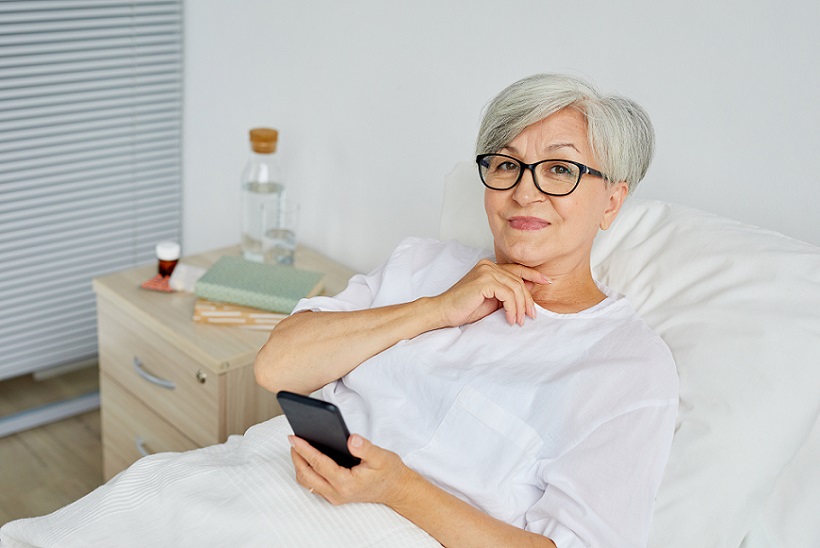
This website uses cookies so that we can provide you with the best user experience possible. Cookie information is stored in your browser and performs functions such as recognising you when you return to our website and helping our team to understand which sections of the website you find most interesting and useful.
The global healthcare biometrics market is expected to reach the value of 74.08 billion U.S. dollars (68.6 billion euros) by the end of 2028, according to Transparency Market Research.
The report states that “Biometrics provides healthcare professionals and patients to secure their information and keep it confidential by only being released such information to those who have the rightful access to it”.
It also affirms that “Healthcare organizations are investing in biometric technologies in order to increase security, privacy, and improve patient safety and thus, compensate the huge amount money lost in healthcare frauds”.
In the last decades the global healthcare industry has taken a turn from its reliance on paper records to electronic ones (HER), bringing many benefits both to patients and healthcare operatives. Nevertheless, this shift implies that healthcare facilities can verify patient identities accurately and quickly during all medical encounters.
This, according to some experts, means moving from biographic-based identification (name, social security number, date of birth and so on) to a more secure and reliable form of authentication: biometric ID.
One of the main reasons is that patient matching and patient identification are two pressing matters that the healthcare industry –at a global scale– needs to address urgently.
According to Ben Moscovitch, project director for health information technology at the Pew Charitable Trusts “research has shown that up to half of patient records may not be matched when transferred from one healthcare facility to another”.
“This can harm patients. For example, if one record indicates that a patient has a particular allergy that is not documented in the other record, and the information is shared, and the patient is given a drug to which they are allergic”, he said at the Healthcare Lessons from Biometric Technology Use Worldwide session, held in March 2020.
He added that having duplicate records in the system can cost 96 U.S. dollars (some 88 euros) to fix each duplicate record.

In the United States a striking case of misidentification led a woman to authorize the death of a stranger who was mistaken for her brother.
This all began on July 15, when Freddy Clarence Williams, 40, was admitted to the St. Barnabas Hospital in the Bronx (New York, US), unconscious from an apparent drug overdose. He had his Social Security card on him, and it identified him by that name.
The hospital called Shirell Powell to tell her that Frederick Williams, her brother, also 40, was near death. She rushed to the hospital to find that the man in the hospital bed had tubes in his mouth, and a neck brace.
“He was a little swollen… [But] he resembled my brother so much. He couldn’t speak from the time they brought him in the hospital. They just assumed it was my brother”. But he wasn’t.
After two days of tests the doctors said the man was brain-dead. It was only after she had given her consent to take her supposed brother off life support that she learnt that her real sibling was in jail. She had sent a stranger to his death.
In another case, also in the U.S., a patient received a chemotherapy treatment designated for another patient. At the hospital desk, the responsible nurse confirmed the patient’s ID from his wristband before administering the treatment. The name matched but the birth date did not. The patient confirmed the name but did not realize the date was wrong.
What the nurse did not know was that another patient with the same first and last name was registered in the hospital’s database. As a result, the man was administered the wrong treatment and although he experienced minimal adverse effects, he sued the hospital alleging harm, and the jury agreed.
Biometrics offers a more secure and simpler way to unequivocally identify people using their unique biological traits such as face, fingerprint, iris, or voice patterns. Thus, although it is still not widely implemented, is being used in the healthcare industry to solve patient matching and patient identification problems.
Biometrics also impedes that data can be copied or hacked. With biometric authentication all an individual need is him/herself. Thus, identifying patients using biometrics ensures that care is provided to the right person, which will lead to a safer and more effective healthcare environment.
In short, the use of biometrics in the healthcare industry can lead to:
• Improve and have cleaner master patient indexes
• Reduce duplicate health records
• Diminish the risk of treating the wrong patient
Biometrics is also a fit solution for telemedicine portals as they are becoming increasingly popular among patients in the post-pandemic era. Telemedicine allows patients to receive medical care without leaving the safety of their homes. It has also proven to be a very effective method for improving access to healthcare services in remote areas.